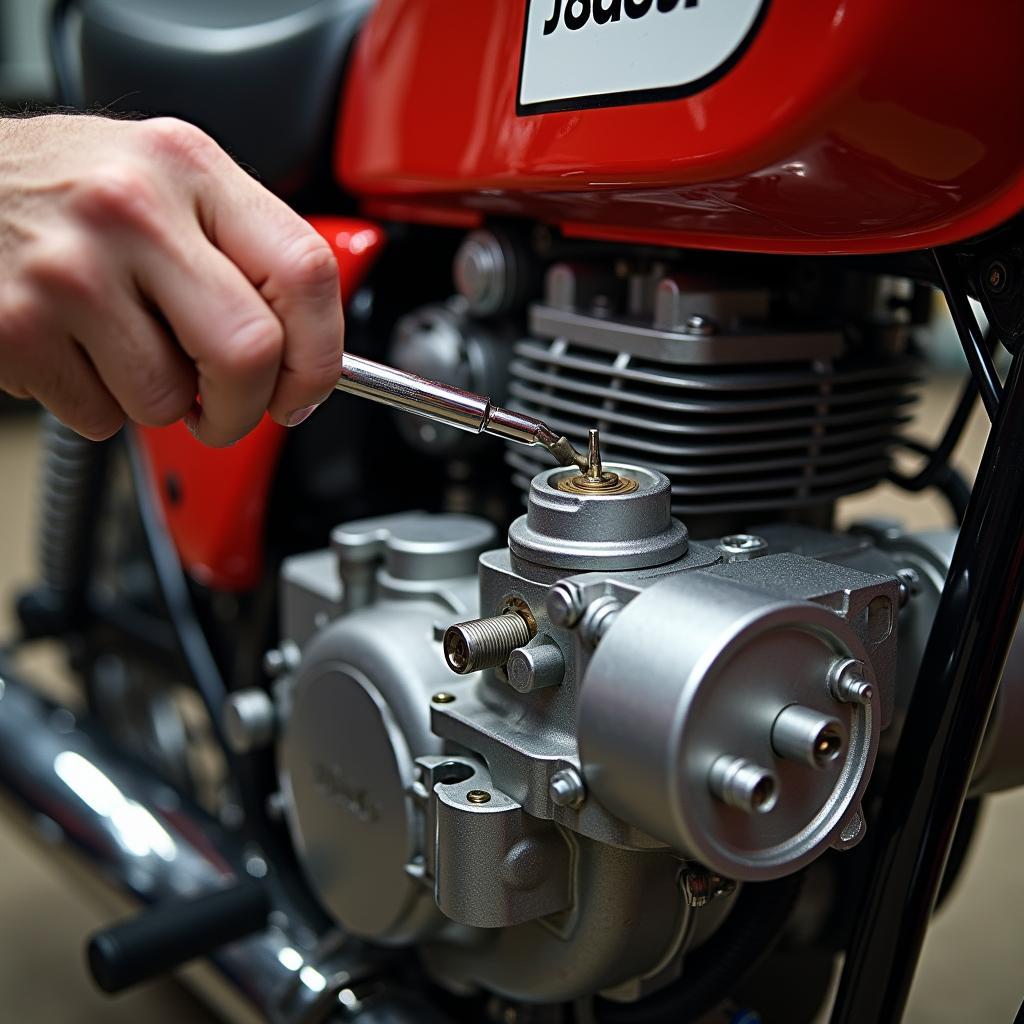The Peugeot Speedfight 3 is a popular scooter, well-regarded for its reliability and enjoyable riding experience. As with any vehicle powered by an internal combustion engine, the carburetor plays a crucial role in its performance and smooth operation. In this article, we will delve into the Peugeot Speedfight 3 carburetor, discussing common issues, cleaning methods, and helpful tips.
The Importance of the Carburetor in the Peugeot Speedfight 3
Before addressing specific problems, it’s important to understand the basic function of the carburetor. The carburetor is responsible for mixing the correct ratio of air and fuel before it enters the combustion chamber to be burned. Optimal mixture formation is crucial for the scooter’s performance, fuel efficiency, and emission levels.
Common Issues with the Peugeot Speedfight 3 Carburetor
Over time and with use, various problems can arise with the carburetor. Some of the most common issues include:
- Clogged Jets: Deposits in the fuel or residues from the combustion process can clog the jets in the carburetor. This leads to an incorrect fuel-air mixture, which can cause starting problems, loss of performance, or rough engine running.
- Leaking Seals: The seals in the carburetor can become leaky due to aging or damage. This leads to intake of unmetered air (vacuum leak), which affects the fuel-air mixture and can cause similar symptoms to clogged jets.
- Float Needle Valve Problems: The float needle valve regulates the fuel level in the carburetor’s float chamber. If it malfunctions, it can lead to carburetor overflow or too low a fuel level, which in turn causes starting problems or performance loss.
 Close-up of a Peugeot Speedfight 3 carburetor being cleaned
Close-up of a Peugeot Speedfight 3 carburetor being cleaned
Cleaning the Peugeot Speedfight 3 Carburetor
Cleaning the carburetor is one of the most effective methods to troubleshoot problems and restore the scooter’s optimal performance. Here are the basic steps for cleaning the carburetor:
- Disassembly of the Carburetor: Before you begin cleaning, you must remove the carburetor from the scooter. This usually requires removing some fairing parts and loosening the clamps on the hoses leading to the carburetor.
- Disassembling the Carburetor: After removal, carefully disassemble the carburetor. Be sure to keep all parts in the order you remove them to facilitate later reassembly.
- Cleaning the Individual Parts: Use a special carburetor cleaner and compressed air to thoroughly clean all parts. Pay particular attention to the jets, the float chamber, and the channels in the carburetor housing.
- Reassembly and Installation: After all parts are cleaned and dried, you can reassemble the carburetor. Make sure all seals and O-rings are seated correctly to prevent leaks.
- Adjusting the Carburetor: After installing the carburetor, you may need to adjust it to ensure an optimal fuel-air mixture. This may include adjusting the idle speed and mixture ratio.
Tips for Preventing Carburetor Problems
In addition to regular cleaning, there are a few tips you can follow to prevent carburetor problems:
- Use High-Quality Fuel: High-quality fuel contains fewer impurities that can clog the carburetor.
- Run the Engine Regularly: Regular riding prevents fuel from evaporating in the carburetor and leaving deposits.
- Use a Fuel Stabilizer: If you are not using the scooter for an extended period, a fuel stabilizer can help prevent the formation of deposits in the carburetor.
 Mechanic adjusting the carburetor of a Peugeot Speedfight 125 scooter
Mechanic adjusting the carburetor of a Peugeot Speedfight 125 scooter
Further Helpful Information
If you are not familiar with cleaning or adjusting the carburetor, you should consult a qualified mechanic. There are also many online resources, including forums and video tutorials, that can help you maintain your Peugeot Speedfight 3. Further information about the Peugeot Speedfight 125 can be found on our website at speedfight 125.
Conclusion
The carburetor plays a vital role in the performance and smooth operation of your Peugeot Speedfight 3. By following the tips described here, you can extend the life of your carburetor and prevent problems. Should problems still occur, you can use the information in this article to troubleshoot them yourself or consult a professional.
